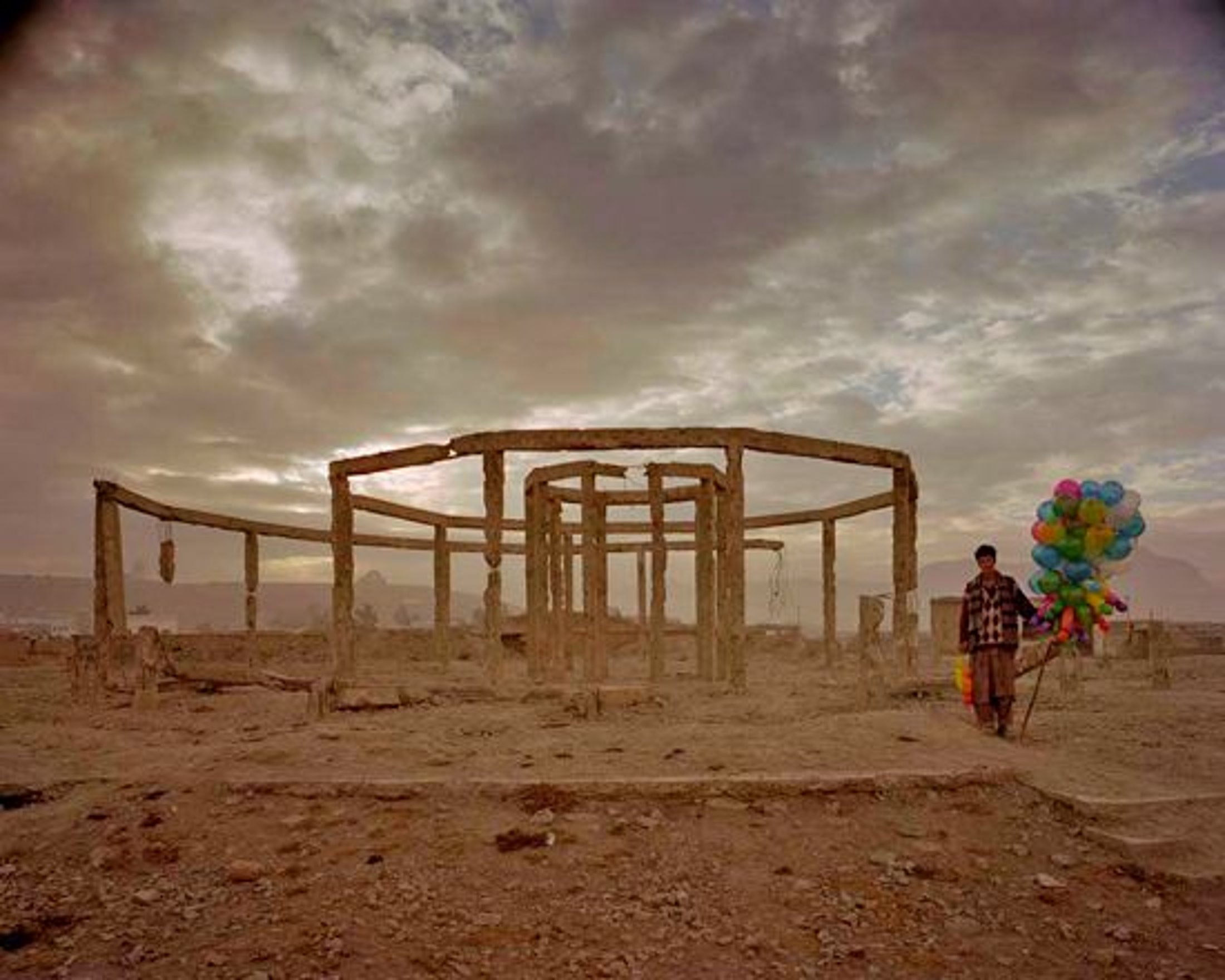He is examining genocide; imperialism; the interconnectedness of war,
land and military space; and how wars are being fought at the same time
with supercomputers, satellites, outdated weapons and equipment, people
on the ground, intercepted communications, and manipulated and manipulating
media.
Norfolk is doing this with photography that is beautiful — stunning
in its clarity and detail, without the typical shock or trauma that one
might expect about the subject of war. All of his work is informed by
inquisitive intelligence, research, supporting facts and figures. And
over time, deliberately and carefully, he is trying to connect many of
the dots.
He attacks his subjects with a forensic approach, and thinks of his photographs
of landscapes as “chronotopes”, layers of meaning, abandoned
redundant military hardware, bombed-out ruins, mass graves, forgotten
memory — all dating back to before the Roman empire and continuing
through to the future, non-stop.
His personal manner and his supporting texts are as quiet as his photographs,
but he has an edge about him that rivets listeners and readers. He makes
bold sweeping statements that link together “designs and patterns,
historical traces [of war] in landscape, architecture, language”
all over the world. He speaks from direct experience: Rwanda, Afghanastan,
Iraq, Bosnia, abandoned battlefields scattered with broken tanks, unexploded
cluster bombs, depleted uranium bullets, mass graves, ruined houses, towns,
villages, lives.
In this constant layering and covering up, and what remains, he believes
it is his duty as an investigative photographer to make us stop and regard
a seemingly benign scene with more discrimination. His job is to “lift
it out of the flow,” freeze it, and make us think.
His books, which he refers to as “chapters” in the same ongoing
story-telling, are perhaps the most satisfying way to comprehend the complex
things he is trying to communicate. His website is state-of-the-art and
packed with informed reporting and packaged in a compelling manner. If
you get a chance to hear him speak, do so. And when you see his very large
prints on the walls of galleries or museums, they will mean so much more
to you.
We met for the first time in the summer of 2006 immediately after he delivered
the keynote lecture at the Rhubarb-Rhubarb photography festival in Birmingham
UK. We sat for more than an hour talking about his work and ideas. Here,
you can listen to several choice bits of that conversation:
— Jim Casper
Visit Simon Norfolk's great website.

Interview
Forensic Traces of War
Acclaimed photographer Simon Norfolk is exploring the idea of “battlefields” and how that term has expanded in meaning in recent wars. Here we feature images from several bodies of work, plus an engaging audio interview with Norfolk.
View Images
Interview
Forensic Traces of War
Acclaimed photographer Simon Norfolk is exploring the idea of “battlefields” and how that term has expanded in meaning in recent wars. Here we feature images from several bodies of work, plus an engaging audio interview with Norfolk.
Forensic Traces of War
Acclaimed photographer Simon Norfolk is exploring the idea of “battlefields” and how that term has expanded in meaning in recent wars. Here we feature images from several bodies of work, plus an engaging audio interview with Norfolk.

Simon Norfolk
Simon Norfolk is a very talented driven young photographer
who is pursuing one of life’s big questions with intensity and focused
intention. He is studying war, and its effects on many things: the physical
shape of our cities and natural environments, social memory, the psychology
of societies, and more.

